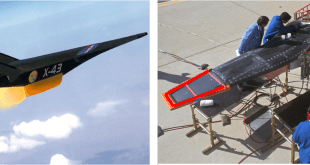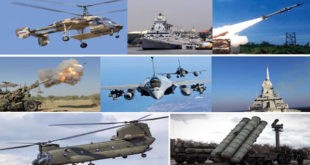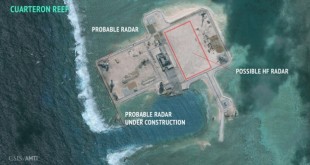Sweden, a Nordic nation known for its neutrality and peaceful foreign policy, also maintains a formidable military force. Despite its relatively small size, Sweden’s military capabilities are well-respected and play a vital role in its national security. Sweden, a nation renowned for its neutral stance during much of the 20th century, has undergone significant military transformations in recent years. As geopolitical tensions in Northern Europe rise, particularly with Russia’s increasing assertiveness, Sweden has renewed its focus on defense and military capabilities. Despite its long-standing commitment to neutrality, Sweden has been steadily strengthening its armed forces across air, land, and sea.
On 7 March 2024, after years of diplomatic negotiations, Sweden officially joined NATO, marking a historic moment for the Scandinavian country. This decision was largely driven by Russia’s invasion of Ukraine two years ago, compelling Sweden to reassess its defense posture and move closer to Western military alliances.
Sweden’s accession strengthens NATO’s northern flank, and the Swedish flag will now fly at NATO’s headquarters in Brussels. NATO Secretary General Jens Stoltenberg welcomed Sweden, stating that “Sweden’s accession makes NATO stronger, Sweden safer, and the whole alliance more secure.” With its sophisticated and modernizing military capabilities, Sweden is set to become a vital contributor to the alliance. In this article, we will explore Sweden’s military strength across air, land, and sea, and how its integration into NATO will bolster the alliance’s capabilities.
Military Doctrine
Sweden’s military doctrine is centered around a robust approach to deterrence and defense, underscoring its commitment to safeguarding national security and maintaining regional stability. The country’s defense strategy is built on several key pillars:
Deterrence and Defense
Sweden’s military doctrine places a strong emphasis on deterrence to prevent potential aggressors from challenging its sovereignty. The nation maintains a well-equipped and versatile defense force, designed to respond effectively to any security threats. By demonstrating a capable and ready military, Sweden aims to dissuade potential adversaries from pursuing aggressive actions.
Strategic Defense Posture
Sweden’s strategic defense posture focuses on the ability to defend its territory across multiple domains: air, land, and sea. The integration of advanced technologies and modern military equipment—such as the JAS 39 Gripen fighters, Leopard 2 tanks, and GlobalEye surveillance aircraft—ensures Sweden’s ability to respond to a range of threats and maintain operational superiority.
Multinational Cooperation
Sweden actively participates in international defense collaborations, most notably as a member of the Nordic Battlegroup. This multinational force, which includes contributions from Sweden and other Nordic countries, is designed for rapid deployment in collective defense operations. The Nordic Battlegroup is equipped to respond to crises and conflicts, providing a flexible and effective response to regional security challenges.
Comprehensive Defense Strategy
In addition to its traditional military capabilities, Sweden’s doctrine incorporates a comprehensive approach to security. This includes civil-military cooperation, cyber defense, and strategic partnerships. By integrating various elements of national power, Sweden aims to address complex and evolving threats in an increasingly interconnected world.
Regional Stability and Alliance Contributions
Sweden’s commitment to regional stability is further demonstrated by its recent accession to NATO. As a new member of the alliance, Sweden enhances NATO’s collective defense capabilities, contributing its advanced military assets and strategic expertise to bolster the security of the alliance. Sweden’s role in NATO is aligned with its broader defense doctrine, which prioritizes deterrence, defense, and multinational cooperation.
In summary, Sweden’s military doctrine is characterized by a strong focus on deterrence and defense, supported by advanced technology and strategic partnerships. Its participation in multinational forces like the Nordic Battlegroup and its new role within NATO reflect Sweden’s dedication to maintaining national security and contributing to regional and alliance stability.
Air Power: Advanced, Agile, and Expanding
Sweden’s Air Force is one of the cornerstones of its defense strategy, built around the JAS 39 Gripen, a multi-role fighter jet produced by Saab AB. The Gripen is renowned for its agility and versatility, allowing it to perform a wide range of missions.
Saab JAS 39 Gripen
The Gripen is a 4.5-generation fighter jet known for its versatility, cost-efficiency, and advanced avionics. It can carry out air-to-air combat, strike missions, and reconnaissance roles. Designed and manufactured domestically by Saab, the Gripen is an embodiment of Sweden’s emphasis on indigenous defense technologies. With a high operational readiness rate, the Gripen can take off and land on shorter runways, a crucial feature given Sweden’s unique geography and the need to disperse its forces in times of conflict.
The Gripen is supported by a wide range of modern systems, including advanced radar, electronic warfare capabilities, and data-link technology that allows seamless communication with NATO allies. Moreover, Sweden has been upgrading the Gripen to the E/F variant, featuring enhanced radar systems, longer range, and more powerful engines
Sweden currently operates 95 JAS 39C/D Gripens, procured between 1997 and 2007, alongside two of the latest JAS 39E Gripens, acquired in 2021. Over the next decade, Sweden is expected to increase its defense budget significantly, allocating $254 million for Gripen E aircraft in 2023, with spending forecast to reach $1 billion by 2033. This steady increase in investment demonstrates Sweden’s commitment to maintaining an advanced and modern air fleet.
Unlike many of its NATO counterparts, Sweden has chosen not to adopt the F-35 Lightning II under the Joint Strike Fighter Program, instead focusing on expanding its indigenous capabilities. By 2030, 400 F-35s are expected to be in use across NATO, but Sweden’s reliance on the Gripen adds diversity and flexibility to NATO’s collective airpower.
Air Surveillance and Defense
Sweden also operates a sophisticated air defense network, including surface-to-air missile systems like the RBS 97 and RBS 70, which offer a robust layer of protection against airborne threats. Additionally, the country’s early warning and surveillance aircraft, such as the Saab 340 Erieye, provide vital intelligence and tracking of adversary movements in Swedish airspace.
In addition to its fighter fleet, Sweden is also investing in GlobalEye Airborne Early Warning and Control aircraft, which were contracted from Saab in July 2022. These aircraft are equipped with Erieye extended-range radar systems, with a range exceeding 550 kilometers. The GlobalEye provides intelligence, surveillance, and reconnaissance (ISR) over air, land, and sea, offering real-time data to multi-domain units. With Russian naval activity increasing in the North Sea, the GlobalEye will be an invaluable tool for monitoring adversary movements and strengthening NATO’s situational awareness.
Land Forces: Modernization and Innovation
Sweden’s ground forces (Svenska armén) are built around the principle of defending the country’s sovereignty against potential aggressors. In recent years, Sweden has undertaken major reforms to enhance its army’s capabilities, transitioning from a Cold War-era conscription-based force to a more professional and technologically advanced military.
Armored and Mechanized Units
At the core of Sweden’s land-based defense are its mechanized infantry units, supported by advanced armored vehicles. The primary main battle tank of the Swedish army is the Stridsvagn 122, a heavily upgraded variant of the German Leopard 2 tank. Known for its excellent armor and firepower, the Stridsvagn 122 is optimized for Scandinavian conditions, with superior mobility in snowy and forested terrain.
The Leopard 2 main battle tank forms the core of Sweden’s armored fleet, with 120 Leopard 2A5s currently in service. First acquired over 20 years ago, these tanks have been periodically upgraded to keep them battle-ready. In November 2023, Sweden signed a contract with German defense manufacturer KNDS to retrofit 44 Leopard 2A5 units. This upgrade includes improved armor, a longer L55 gun, and enhanced mine protection, ensuring the Leopard remains a formidable force on the battlefield.
Sweden also deploys the CV90 infantry fighting vehicle, one of the most advanced armored platforms in the world. Developed by BAE Systems Hägglunds, the CV90 features cutting-edge active protection systems, advanced sensor suites, and high mobility. It provides vital support for infantry units and has been exported to several other nations, underscoring its reputation for battlefield superiority.
Artillery and Missile Systems
Sweden has placed significant emphasis on long-range artillery systems to counter any potential threats from its neighbors. The Archer Artillery System, a fully automated self-propelled howitzer, is a critical component of Sweden’s artillery. With a rapid-fire capability and a range of over 30 kilometers, the Archer is one of the most advanced artillery systems in the world, capable of delivering precision strikes against both ground forces and strategic targets.
Sweden also maintains a modern missile defense program, including anti-tank guided missiles such as the RBS 56 BILL 2, which provides a formidable defense against armored threats. Sweden’s Patriot system package includes over 300 missiles, alongside radar sets, control stations, and launchers, giving Sweden a robust and flexible defensive capability against both airborne and missile-based threats.
In addition to upgrading its tank fleet, Sweden is also investing heavily in ground-based air defense systems. The country began receiving MIM-104F Patriot missile systems from Raytheon in November 2021, becoming the first non-NATO partner to adopt the system. Now officially part of NATO, Sweden’s LvS103 Patriot systems will significantly enhance the alliance’s ability to counter long-range missile threats. Supported by Missile Segment Enhancement (MSE) interceptors from Lockheed Martin, Sweden’s air defenses are now capable of intercepting increasingly sophisticated aerial threats.
Maritime Strength: Safeguarding the Baltic Sea
Given its extensive coastline and the strategic importance of the Baltic Sea, Sweden has developed a navy (Svenska marinen) with a focus on defending its territorial waters and deterring aggression from adversaries, particularly in the Baltic region. The Swedish Navy has invested heavily in stealth technology, advanced submarines, and surface vessels that can operate effectively in coastal and open sea environments.
Sweden’s naval forces play a crucial role in securing its 15-kilometer maritime border with Russia’s Kaliningrad. While Sweden’s navy is not as large as some other NATO members, its strategic focus and advanced technology make it a formidable presence in the Baltic Sea.
Submarines: Silent Defenders
The Swedish Navy currently operates four diesel-electric submarines, including three Type A19s and one Type A17, acquired in the 1990s. However, Sweden’s naval modernization program includes the acquisition of two Blekinge-class (A26) submarines by 2027. These submarines will feature Air Independent Propulsion (AIP) systems, which allow them to remain submerged for extended periods without surfacing to recharge batteries. This enhances the navy’s ability to conduct stealth operations in contested waters, particularly in the Baltic, where Russian naval forces pose a potential threat.
The Gotland-class submarines are the pride of Sweden’s naval capabilities. These diesel-electric submarines are equipped with air-independent propulsion (AIP) systems, allowing them to remain submerged for extended periods, a critical advantage in the shallow waters of the Baltic Sea. The Gotland-class is renowned for its stealth characteristics, making it extremely difficult to detect, even for advanced anti-submarine warfare (ASW) systems. The Swedish Navy is currently upgrading these submarines with new sensors and systems to maintain their technological edge.
Sweden is also developing the Blekinge-class submarines, a next-generation platform expected to enter service by 2025. These submarines will feature even more advanced stealth technologies and improved operational range, reinforcing Sweden’s dominance in underwater warfare. Blekinge-class submarines featuring a modular structure that can accommodate versatile weapon systems and scalable crew sizes. This flexibility will allow the Swedish Navy to maintain cutting-edge capabilities well into the future.
Surface Vessels: Stealth and Firepower
Sweden’s surface fleet is designed for rapid response and coastal defense. The Visby-class corvettes, known for their stealth design and low radar signature, are among the most advanced warships in the world. Armed with anti-ship missiles, torpedoes, and naval guns, these vessels are well-equipped to defend Sweden’s waters from any incursion. The Visby-class is also capable of engaging submarines and aircraft, making it a versatile tool in Sweden’s naval arsenal.
The Swedish Navy also operates Koster-class mine countermeasure vessels and other support ships, ensuring that Sweden can keep its vital sea lanes clear of mines and other threats during a conflict.
In addition to its submarine fleet, Sweden operates 160 CB90-class combat boats, highly agile vessels suited for coastal defense. Despite their effectiveness, much of Sweden’s surface fleet was acquired before 2013, signaling the need for future modernization efforts to ensure Sweden remains capable of defending its waters.
National Guard and Reserve Forces
In addition to its professional army, Sweden maintains a large and well-trained reserve force known as the Home Guard (Hemvärnet). This unit consists of around 22,000 personnel and is tasked with defending key infrastructure and supporting regular army units during crises. The Home Guard provides a vital layer of territorial defense, with units stationed across the country ready to mobilize at short notice.
Modernizing for Future Threats
In response to growing threats from Russia and the deteriorating security situation in Europe, Sweden has significantly increased its defense spending. In 2020, the Swedish government announced a historic boost to military funding, aiming to increase defense expenditures by 40% by 2025. This investment will not only enhance Sweden’s existing capabilities but also enable the country to acquire new weapons systems, improve cybersecurity, and strengthen its intelligence operations.
Sweden’s defense strategy is also increasingly focused on multi-domain operations (MDO), integrating air, land, sea, space, and cyber capabilities. The goal is to enable rapid and coordinated responses to emerging threats, ensuring that Sweden’s military remains agile and effective in the face of new security challenges.
Strategic Importance: A Key NATO Ally
Sweden’s membership in NATO provides a significant boost to the alliance’s capabilities in northern Europe. With advanced air power, well-equipped land forces, and a strategically focused naval fleet, Sweden brings both strength and technological expertise to NATO.
Sweden has been carrying Joint air exercises with NATO countries and neighboring Finland, improving Sweden’s interoperability with Western military forces. These joint drills enhance the Flygvapnet’s ability to respond quickly in the event of an aerial conflict in the Baltic region.
Sweden’s decision to invest in indigenous military technologies, such as the Gripen and GlobalEye, highlights its ability to provide unique contributions to NATO’s defense posture. Additionally, its investment in Patriot missile systems and the modernization of its Leopard 2 tanks ensures Sweden’s land forces will remain a powerful deterrent against potential aggressors.
As tensions with Russia persist, Sweden’s strategic location on the Baltic Sea and its maritime assets make it a critical player in securing NATO’s eastern flank. The upcoming introduction of Blekinge-class submarines will further enhance Sweden’s ability to project power and defend its waters.
Conclusion: Sweden’s NATO Journey Strengthens the Alliance
Sweden’s military transformation reflects its commitment to maintaining national security in an era of increasing geopolitical tension. Across air, land, and sea, Sweden has developed a modern, technologically advanced military force capable of defending its territory and supporting international peacekeeping efforts.
Sweden’s accession to NATO marks a pivotal moment for the alliance, as it gains a new member with advanced military capabilities across air, land, and sea. Sweden’s JAS 39 Gripen fighters and GlobalEye surveillance aircraft provide critical airpower, while its Leopard 2 tanks and Patriot missile systems ensure strong land defenses. Additionally, Sweden’s Blekinge-class submarines and coastal defense vessels fortify the alliance’s northern maritime frontier.
As NATO continues to adapt to new geopolitical realities, Sweden’s contributions will be invaluable in ensuring the collective defense of its members and deterring threats from adversaries like Russia.
 International Defense Security & Technology Your trusted Source for News, Research and Analysis
International Defense Security & Technology Your trusted Source for News, Research and Analysis



